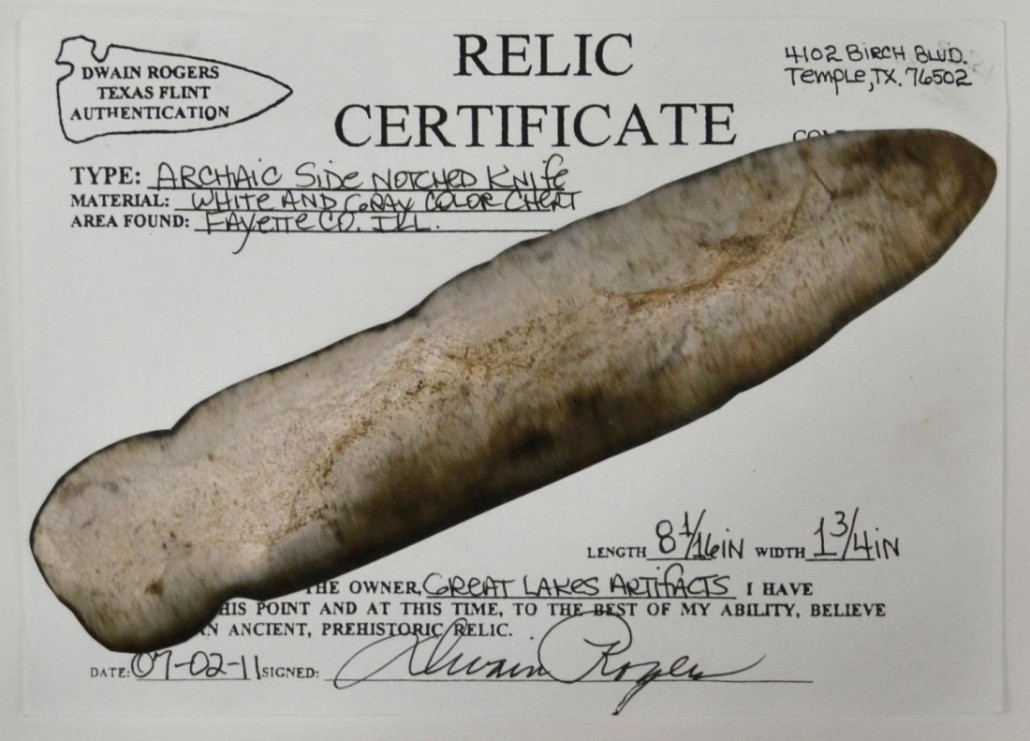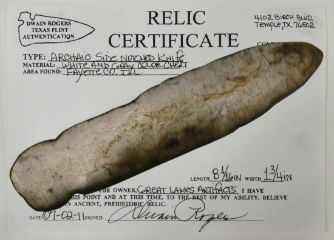
COWDEN, Ill. (AP) – Josh Wehrle is a 21st-century hunter with a keen nose for tracking down traces of the Stone Age. He hunts finely honed spear, dart and flint arrow tips used by Native Americans to kill everything from mastodons to deer.
And this loosed flurry of projectiles, found along creek beds and all over the place near Wehrle’s Cowden home, does date back a long, long way.
Our hunter shows off a Clovis flint spear tip that is still as sharp as a razor despite being last used 12,000 years ago. To put that in perspective, Egyptian king Tutankhamun was being laid to rest as recently as 1323 B.C. And one of the wonders of ancient Egypt, the Great Pyramid of Giza, only dates back 4,575 years.
A visitor who spends any time with Wehrle gets used to these mind-warping dashes back in time. A well-read collector since he was 10 who still hunts at least once a week, he’s amassed more than 3,000 flint projectiles and stone tools. He pours them out in little heaps, saying how these here, with the “side notches” date back more than 5,000 years, while those over there with the squared-off bases are 6,000 years old.
The big flint projectile tips can measure up 5 inches long, while actual arrowheads (relative newcomers in the race to secure lunch, making their North American debut a mere 1,500 years ago) are much smaller and more delicate. And it doesn’t stop there: Wehrle produces precisely carved stone ax heads, knives and stone implements called “celts,” a later style of ax head.
To listen to him tell it, you would think the countryside is just littered with these things. He says Illinois is one of the nation’s top flint tool hotspots because a lot of Indians used to live and hunt here.
“An archaeologist told me the population in Fayette County 2,000 years ago would be about the same as it is today,” says Wehrle, 42, a Caterpillar Inc. machinist in Decatur. “The Indians were well spread out.”
What remains of the ancient American past, however, is the imperishable stone, often worked with magnificent skill into lethal slivers that still target the imagination.
“Not everybody could be a flint knapper,” explains Wehrle, using the term for a shaper of stone into useful stuff. “I can’t do it, and I’ve tried, but I am not good at it.”
But when it comes to getting to the point ages after they were lost, there are few to touch him. His wife, Crystal, says she can walk the same area he does and see nothing. “But he’s so good at,” she adds. “He’ll walk up right behind and pick one up that I never saw.”
The trick, says her husband, is knowing how to read the signs. He walks creeks and other terrain where Indians wandered long before anyone ever heard of Jesus of Nazareth.
“You look for things like burned rock, because they would line their fire pits with rock,” he says. “If you’re finding burned rock, you know they were camping there, and if you start finding things like flint chips, you know they were manufacturing arrowheads or sharpening them. You’ve got to know what to look for, and you’ve got to be able to read the ground, too.”
Even on a slow hunt day, Wehrle says the reward is still a relaxing trek through the great outdoors, alone with your thoughts and nature. But when you do find one of those magic pieces of flint, and stoop to pick up something perhaps untouched by another hand for 12 millennia, there is a thrill to that contact that never gets old.
___
Source: (Decatur) Herald & Review, http://bit.ly/1W0VPji
___
Information from: Herald & Review, http://www.herald-review.com
Copyright 2016 Associated Press. All rights reserved. This material may not be published, broadcast, rewritten, or redistributed.
AP-WF-01-25-16 1141GMT



